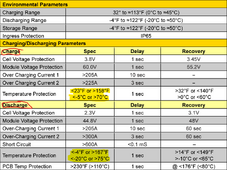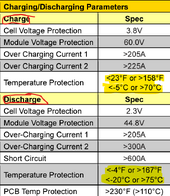The battery is in an insulated cabin in southern Ohio. Occasional use. 2-3 weekends a month depending on weather. Obviously not getting a whole lot of solar production now with the sun below the leafless trees until spring, but we get some. But with a full battery, we can run what we need for the weekend. I'd like to leave the charging system running while we are gone so we can return to a hopefully full battery. (The separate inverter would be off, so no drain.) My concern is low temperature in the shoulder seasons. A typical high of 45 and maybe goes down to 25 at night. Doubt it ever goes below freezing inside the cabin then, but what if you get the unexpected night of 10 or 15? Now maybe it does get below 32 inside for a bit. Can I trust the BMS to save the battery in the morning when the sun comes up?
Equipment is 1 EG4-LLv2, Victron 250/60, and 5 295w solar panels in series.
Equipment is 1 EG4-LLv2, Victron 250/60, and 5 295w solar panels in series.




